Comment: The following is excerpted from a detailed South Front analysis. Read the full article here
The Hezbollah ("Party of God") movement was formed in 1982 in Lebanon by a segment of the Shia community displeased with the secular, in their view, nature of the Amal moderate Shia party. There were also disagreements concerning whether Israel should be confronted using new organizational forms and methods of warfare. According to its Secretary General Hassan Nasrallah, since its formation, Hezbollah was a purely intra-Lebanese creation, relying on the support and aid from the Palestinian and Lebanese parties, while the support from Iran and Syria came later.
Since the very beginning, Hezbollah's activities have been based on three principles. First, Islam is declared an ideological, doctrinal, and practical basis for the organization's functions. Secondly, its main aim is the struggle against Israeli occupation of Lebanon and Palestine and against Zionist domination. Third, it recognizes the Iranian Shia thesis concerning the necessity of Vilayat-e-Fakih. This Shia doctrine asserts that during the era of the 12th Great Reappearance of Imam Muhammad al-Mahdi the leadership over the Shia is transferred to high-ranking Shia clerics.
Structure and Decision Making
Hezbollah, as an organization, has a structure based on certain ideological principles and exists within the framework of a state, that has no actual influence on the movement's activities. The party is led by the Shura Council consisting of 7 members (six spiritual leaders-ulemas-and one secular leader). The members are elected by the Central Council (Al-Majlis al-Markazis), consisting of the 200 most authoritative members of the movement. Shura Council elections consist of three phases. The first is the candidate selection (usually 70-80), both clerics and secular individuals who satisfy the criteria set by the top leaders. Those who pass this stage have the right to participate in the second stage. In other words, they become candidates for the Shura Council. As a rule, 10-15 people make it to the second round. The final phase consists of the direct election of the 7 Shura Council members.
Council decisions are final and religiously binding for all party members. They are adopted either unanimously or by the majority of votes. If there is a deadlock or a split within Shura Council, issues are decided by the party leader, whose decisions are final and obligatory on all administrative institutions, and cannot be challenged. This is how the principle of Vilayat-e-Fakih is observed and splits within the ruling elite are averted.
The actual operations of the party are conducted by the administrative executive apparatus, known as Shura Tanfiz. It consists of five councils:
- Executive Council (oversight over political and organizational matters, including social, cultural, and educational activities);
- Politburo (addresses intra-movement matters);
- Parliamentary Council (concerns itself with Hezbollah activities in the Lebanese legislature);
- Judicial Council (issues religious resolutions and carries out arbitration on matters of disagreement, relying on Islamic law); and
- Jihad Council (directs the movement, including oversight, recruitment, training, equipment, security).
The movement General Secretary is Hasan Nasrallah, who is also the supreme commander of its armed formations. Leadership also includes his deputy, a spiritual leader who is also the supreme judge, some Lebanese legislators, the military formation commander for Southern Lebanon, and regional leaders of the organization. The Executive Council has various departments responsible for specific areas of activity: welfare, healthcare, information, press, finance, external communications, coordination.
Armed Formations and Their Peculiarities
Assessments of Hezbollah's armed strength vary. Iran's FARS news agency data from October 2016 put Hezbollah's armed strength at no less than 65,000 troops, including reserves. Of them, 21,000 are professional soldiers with constant training. According to the 2017 Military Balance, currently 5-8 thousand Hezbollah troops are fighting in Syria.
- Bekaa Valley: the regional commander's responsibilities include control over arms shipments from Iran through Syria for the "Sheikh Abdallah" military camp that's under joint command by the Hezbollah and the Syrian army. According to various sources, this region's forces consist of at least 7 infantry battalions with 252 people each. Three of them are motorized.
- South Beirut: according to various sources, this region includes at least two battalions of 252 troops, one of them motorized.
- South Lebanon: after the Taif treaty of 1989, Hezbollah formations were reorganized and placed under a unified command. The current commander is responsible for Hezbollah military and Special Security formations and may also command Lebanese Army units in South Lebanon. This region includes at least 7 battalions of 252 troops each, five of them motorized.
[...]
Cadre Selection and Training
The preparation of a future fighter starts at a very young age. Kids aged 6 are involved in discussions and as they grow, they receive more advanced political and religious preparation. A sample training regimen includes: Studying Koran, A day at the mosque, I love my country, How to run a household, Summer camp, I submit to my leader. Younger kids' uniform, as a rule, includes blue shirts with epaulettes, white scarves, and pins with the image of Khomeini.
Older boys spend several weeks during the summer in camps in the south and in Bekaa Valley, where they train and acquire survival skills while obtaining more in-depth religious preparation and studying their native language and culture.
Then they transfer to the Imam al-Mahdi Scouts. One of the scouts' missions is helping the poor. According to the Scouts head, if kids who lost their father or their brothers were left to their fate, they would withdraw inwardly and develop psychological problems such as aggression.
At the age of 17, those who excelled at the Scouts become members of Taabia, or the reserves.
At the same time, education does not seek to promote absolute hatred toward Israel, despite what Western journalists love to depict. The education system is first and foremost based on developing a national and religious identity, the context in which the Shia community of Lebanon exists.
In an interview provided by a Hezbollah fighter, it was noted that those who choose political independence become social pariahs. Such people can't even visit their villages, given that the family and the society hate them.
Cadre troops are focused on combat training, and each receives a specialty such as an ATGM gunner, a sniper, or demolitions. Regular Hezbollah fighters undergo training in specialized camps in Lebanon, Syria, and Iran (under IRGC officer leadership). They conduct training for the rank and file and select outstanding individuals for special units. Some of them become commanders, others are selected for the Special Security Apparatus.
Taabia reservists are engaged in protecting villages and are selected from the Scouts. Cadre fighters and reservists undergo service in one of the districts: Israel-Lebanon border and the Litania river area-Nasr Brigade, north of Litania-Badr Brigade, Bekaa Valley-Haidar Brigade.
Each Hezbollah brigade in south Lebanon has a sector in northern Israel that it is supposed to occupy. Combat and special training in each brigade take into account local geography. One should also note that border terrain is fortified: there is a large-scale network of tunnels, bunkers, minefields. Using the tunnels, Hezbollah can concentrate large number of troops on the needed attack sector without being spotted and attacked from the air.
Due to fighting in Syria, Hezbollah opted to conduct training courses with reservists lasting 60-90 days. Commanders are also sent to the battle zone to obtain experience. Intensive operations and unavoidable losses have forced commanders and troops to remain in the war zone (murabata) for longer than their rotation periods. For the reservists, it was 15 days a year. Before the Syrian war, the border with Israel was considered such a zone. Currently, the rotation period in the Syrian war zone is 20 days and may be increased if the situation demands it. This is considered optimum, as it allows for having trained and rested troops available in case of any escalation on Israel border, and in Syria.
Here's an example of a news report regarding deployment of Hezbollah units from May 20, 2017. The Radwan special unit and others were fully withdrawn from Syria and replaced by the Badr Brigade which is stationed in the eastern and northern part of the Aleppo province. Aziz Brigade was withdrawn from the outskirts of Palmyra and al-Qaem Brigade temporarily replaced it there.
Moreover, the Radwan unit was brought to an elevated alert level and sent to south Lebanon (Litania river and Shebaa farms on Israel border). Al-Jalil Brigade, intended for operations in Galilee in case of war with Israel, remained on its permanent positions in south Lebanon. Nasr Brigade, which is directly under Hasan Nasrallah, remained in reserve.
The Radwan unit was named after the head of Special Security department Imad Mugniyeh (pseudonym al-Hadja Radwan) who was killed in 2008. The unit has much experience in raids and is the most prepared for urban warfare, which makes it irreplaceable in Syria. If there is a new war between Hezbollah and Syria, it will be in the first line of attack.
Military Doctrine. Specifics of Fighting in Syria
Hezbollah leadership reviewed its concept of operations after the start of the Syria war. Before the war, the emphasis was placed on defensive ops in built-up areas with small units to inflict maximum troop and equipment losses on the IDF while simultaneously shelling Israel using large numbers of short- and medium-range rockets.
In Syria, Hezbollah realized that it had to wage offensive ops in cities. Therefore it reconsidered its training system, increased its rocket arsenal, and provided more heavy weapons and recon systems.
The first operation where Hezbollah took offensive using large units was the battle for el-Quseyr in May-June 2013. Some 1200-1700 best-trained Hezbollah troops took part in the battle. They were divided into 17 detachments, with later division into teams of 3-5 troops. Prior to the attack, the command performed recon of the city and its approaches, then divided the city into 16 sectors, one for each detachment. Each region had its codename. During the battle, this allowed for command of forces using open channels of communication without the enemy being able to take any countermeasures. Hezbollah command undertook the direction of SAA tank and artillery units near the city.
Considering that the city was in the Islamist hands for over a year and was well-fortified, the ratio of losses was nevertheless 5:1 in favor of Hezbollah. The battle showed that with proper organization, a fortified city can be effectively attacked by a small force.
As far as the military direction of Hezbollah units in Syria by Iran is concerned, it seems probable that Iran directs Hezbollah units down to battalion level (sometimes down to company) using IRGC specialists from the al-Quds Force. It can't be ruled out that IRGC specialists coordinate Hezbollah and local self-defense forces like the Kataib Hezbollah and Asaib Ahl al-Haq. Units smaller than a battalion don't warrant the provision of specialists. There is a need for a large number of trained cadres able to command and provide assistance. One of the factors influencing cooperation in this instance is the language barrier-Arabic in Lebanon, versus Farsi in Iran.
Hezbollah became one of the factors which allowed to turn around the war in Syria, since its troops were able to fight in cities. The SAA, in 2011-12 was organized along 1970-80 lines to fight combined arms battles mainly against Israel. New realities have shown that this army was unable to fight as small units in the cities. Moreover, the SAA has not fought for a long time. Its last significant operations took place in 1982. Therefore it had no commanders with urban warfare experience. Hezbollah, on the other hand, has constantly fought Israel since the moment of its creation. Generations of commanders have honed their skills in the years of clashes and battles with the IDF, causing it serious losses during the 2006 war. Israel was forced to retreat from south Lebanon, and Hezbollah's reputation has risen to unprecedented heights.
Israel's military command is worried about Hezbollah's operations in Syria, since its paramilitary wing will now be able to wage offensive ops using heavy weapons and a huge number of short-, medium-, and long-range rockets.
The fact that Hezbollah has become akin to a regular army is confirmed by IDF's rethinking of its approach to the fight against it. First, IDF is preparing for fighting big formations, up to a brigade, whose task will be invading Israel and capturing villages or military bases. Second, it is paying special attention to combating tunnels, including technical and psychological preparation of its troops to fight in tunnels.
[...]
Intelligence and Counter-Intelligence
Hezbollah's Special Security department is responsible for both intel and counter-intel, and implements several missions, one of the most important being professionally carried out operations abroad at the behest of Shura Council. Imad Fayez Mughniyeh was a head of Special Security department until 2008 when he died in a car bomb blast in Kafr Sousa neighborhood of the Syrian capital, Damascus.
Responsibilities of the department's head in Shura Council include overseeing the following departments:
- National preventive security apparatus, which provides personal security to high-level spiritual leaders.
- Internal security and intelligence apparatus, which tracks political and religious reliability of the Hezbollah members.
- National central security apparatus, which observes, tracks, infiltrates, and if necessary eliminates military or political individuals or groups seeking to interfere with Hezbollah in Lebanon.
- Foreign combat cells and intel apparatus. This department partly overlaps with the central security council, depending on types of requests received by cell leaders.
Before 2005, Hezbollah was to a large extent integrated into Lebanese intel services, including Amn al-Amn Main Directorate for Common Security which expanded its ability to carry out intelligence and counter-intelligence ops. After Hezbollah was accused of being complicit in the death of former Lebanese PM, Rafik Hariri in February 2005, Hezbollah members were forced to leave Lebanese secret services, which affects the movement's intel work.
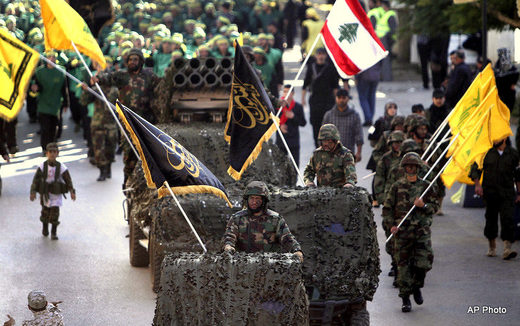
The movement's intel successes are largely based on exploiting familial and criminal ties between Israeli and Lebanese Arabs, and the well-oiled cooperation between Hezbollah intel and Palestinian Authority armed formations. Moreover, Hezbollah intelligence often uses interrogations of captured officers and soldiers, and data obtained through recruitment of senior Israeli officers. For example, Hezbollah was able to recruit IDF Lt. Col. Omar el-Haiba, a Bedouin. This officer occupied a high post in the Western district HQ. He was one of the most capable Bedouin officers in the IDF. After a serious wound, he was disabled but nevertheless returned to the IDF and earned awards for his agitation among the Bedouins. This officer was arrested on suspicion of giving Hezbollah secret information on IDF forces on Lebanon border and the schedule of patrols. On June 18, 2006 a court martial sentenced him to 15 years in prison for espionage, contact with enemy agents, and drug trade.
Due to the secrecy regime in Special Security Apparatus, little is known about foreign terrorist and intel cells. As a rule, they become known only after major events. Hezbollah selects people for special ops from among its own special units. These people are believed to be well trained and prepared to die for the sake of the mission. Some of them are from Arab and Islamic organizations that have ceased to exist. All of Hezbollah's special ops are handled by Special Security apparatus, with support from Iranian and Syrian intel and special ops forces, and from the IRGC.
Members of the overseas cells are thoroughly trained. They have knowledge and information about the country where they work. They speak the language of the country. This attracts less attention from civil and military authorities.
Infiltration unit equipment in includes Israeli or other military uniforms, depending on the mission. Units infiltrating Israel speak Hebrew, use Israeli weapons and equipment as camouflage, and are familiar with all types of weapons used in the region. Members of special infiltration units and members of the suicide units differ, among other things, by their uniforms. For example, Jihad Detachments wear green or black clothing, carry Semtex, C-4, or C-9 charges, and usually wear masks on operations.
The following Jihad Detachments are known:
- Islambula Brigade: assassination of political activists.
- Al-Quds Brigade: two units of suicide bombers consisting of 56 each, the Fathi Shkaki Company and the Ihye Ayasha Company.
One should note that the Hezbollah units and controlled territories are targets of Israeli human intelligence efforts. Israeli Border Police (MAGAV) includes the YAMAS unit which camouflages its members to look like Arabs. During the 2006 war, Hezbollah counterintelligence located and destroyed an Israeli agent network in south Lebanon and Beirut. The network conducted espionage in Hezbollah HQ and transmitted this data to the IDF. Agents from among local population set up equipment to monitor Hezbollah military installations and used GPS devices to guide munitions, spread glow-in-the-dark powder around buildings and command centers, rocket warehouses and launch sites. Still, IDF and Israeli intel was not able to kill or capture a single senior Hezbollah official or destroy the command system, since the shelling of Israel continued no matter what.
The Media: Agitation and Propaganda
Hezbollah places particular importance on the media. It owns a satellite TV channel (al-Manar), four radio stations, and five newspapers. Without any doubt, Hezbollah's image was to a large extent formed by al-Manar, which has been broadcasting since June 1991, and went satellite in 2000. It has become Hezbollah's face to the world. The channel is unique, before its existence Arab media consisted of newspapers and radio stations. Experts believe its audience is second only to al-Jazeera. Al-Manar became the official channel of the movement, demonstrating accomplishments, particularly in the realm of fighting Israel. Its broadcasts consist mainly of news and political programs, broadcasts dedicated to the memory of martyrs, informational and entertainment shows. It is also unique in that it broadcasts in Hebrew for the Israeli population. While Western media depict the al-Manar as propaganda for a terror group, the channel does not broadcast any information on making bombs, executions of Israeli soldiers, blowing up of checkpoints, and other forms of cruelty.
Hezbollah radio stations al-Nour and al-Iman broadcast from southern Beirut. Al-Islam broadcasts in south Lebanon, and Sawt al-Mustad'afin broadcasts in the area of Bekaa river valley. There are also newspapers: Al-Bilad, al-Ahd, al-Muntalaq, al-Sabil, and Baquitou Allah.
The movement has a website, www.moqawama.org. Its content includes the most important news from Lebanon and the world, video addresses by movement leader, respecting the memory of martyrs, opinion polls, and memorable dates in the movement's history. Agitation video broadcast by TV and web channels are of high artistic and directorial quality and take into consideration the preference of the audience and Arab mentality not only in Lebanon but the world.
Social Work
Even though the Hezbollah is known in Western media as a terror organization, it defies that label by the multifaceted aspect of its activities. Apart from fighting in Syria and against Israel, it is part of Lebanon's legislature, provides education and medical services to the Lebanese. In 2000-2010 Hezbollah spent several billion dollars on humanitarian efforts in Lebanon. The organization builds kindergartens and schools, hospitals and clinics, and even supermarkets. Its fighters and their family members can take advantage of many services with major discounts. Education in Hezbollah-built schools is cheaper than in public schools. The poor obtain stipends. Of course, the education focuses on the Arabic language, Islam, and Shia traditions. But English language and physical sciences are also taught. These schools provide a very high level of instruction by ME standards.
The media also focus on those who fell for the freedom and independence of Lebanon. As a sign of respect for the martyrs, which is how Shia community views them, the funerals are attended by senior officials. They also participate in any funerals of people who perished in battle or in other circumstances. This is apparently due to Hasan Nasrallah's having suffered a personal loss. His eldest son Hadi became a martyr in April 2000 during fighting in south Lebanon.
If the killed fighter had children, they are taken under care, receive education or jobs. In spite of financial problems, providing money for cadre soldiers and for the families of the dead is the top priority.
- Mu'assasat Jihad al-Bina' or the Fund for Sacred Struggle was founded by the Hezbollah in 1988. It quickly became one of the most visible NGOs in Lebanon. Although it is autonomous, its activities fall under the purview of the social services department of the movement. Its main aim is to "lessen the burdens faced by the poor families by relying on God's aid in fulfilling their moral and Islamic obligations." The Fund operates in southern districts of Beirut, Bekaa Valley, and south Lebanon. The fund provides more than half of population of those regions with water, helps farmers with procuring livestock, fertilizers, fuel. It carries out electrification of the most backward villages.
- Mu'assasat al-Shahid, or the Martyrs' Fund, supports the children of killed or captured fighters and civilians. It provides housing, jobs, and support for widows and runs a job placement office for the youth.
- Lujnat Imdad al-Khomeini, or the Khomeini Support Committee, was formed right after Israeli aggression of 1982. It helps poor families, particularly those which suffered from Israeli occupation. The aid includes monthly benefits, food parcels, basic necessities, clothing, health services, and education. The committee provides medical assistance, including through medications, diagnoses, surgeries, and rehabilitation, to tens of thousands of patients a year. The financial and technical incapacity of the Lebanese government, particularly the Ministry of Health, forced the movement to take under the control of the Islamic Health Unit the hospitals of south Lebanon.
The education department also provides needy students higher education in applied sciences, and religious studies in various institutions such as Technical Institute of the Great Prophet, the Technical Institutes of Sayyid Abbas al-Musawi, the Institute of Sayydat al-Zahra', the Institute of Shaykh Raghib Harb, and the Islamic Shari'ah Institute.
Other types of aid include paying for textbooks and school materials, and part of the tuition in public and private schools.
[...]
Why Hezbollah Became a Middle East Powerhouse and Its Transition to a Quasi-state
After the IDF withdrawal from most of Lebanon in 1985, Hezbollah with active support from the IRGC began to create its own weapons arsenals, and the January 1989 Damascus-Tehran agreement allowed Hezbollah to restore its military infrastructure and resume operations in south Lebanon. Thus by 1991 Hezbollah became the leading Lebanese resistance force, operating in the country's south against the IDF
Starting in early '90s, Hezbollah began a transition away from being a purely paramilitary formation. In the summer of '92, Iran's leaders recommended Hezbollah transform itself from an openly extremist organization into an active Lebanese political force. Hezbollah reached an internal compromise between the "moderates" and "radicals", established a ceasefire with Amal, and began active preparation for parliamentary elections. Hezbollah today acts as the leading political force in Lebanon and as a major Shia social and humanitarian organization (Lebanon has an estimated 2.5 million Shia out of 6.2 million total population). IDF withdraw from south Lebanon in 2006 was a huge victory in the eyes of the Arab world. Hezbollah has truly become a significant regional factor. Growing its influence in Lebanon and Syria and the region with Iran's help, Hezbollah has become a base for recruitment, training, and preparation of volunteers for battling Israel and radical Sunni organizations. Hezbollah units often fight like regular army nits.
One of the reasons for the rise of Hezbollah's regional influence is the strategic coordination between the Lebanese and Iraqi Shia, and also Syrian Alawites due to the continuous war in the Middle East. It's important to note that the organization has proved its worth even in the darkest hours of Lebanon's history, such as the many years of almost uninterrupted slaughter, but also during the perennial clashes with its external adversaries, even dangerous ones like Israel.
Opinions of Iran's influence vary. Some experts claim Iran's aid is so important that it fully affects all aspects of Hezbollah's decision making process. Naturally, Iran's authority as the leader of the Shia around the world is near-absolute. It also provides Hezbollah with tremendous military aid. Moreover, the movement has suffered losses in Syria, it's most professional and best trained fighters have perished there, which weakens the organization. Therefore Hezbollah leaders have to show more flexibility and care in its dealings with Iran if differences of opinion arise. The most likely explanation is that Hezbollah maintains considerable independence due to its exceptional political standing in the country, and of its nature as a strike force against Israel and Syria's Sunni. Since the start of conflicts in Syria in 2011, Nasrallah tried to maintain neutrality. Hezbollah became involved only in 2013 when the situation grew out of control and there was a danger of combat spreading to Lebanon. Nasrallah stated in one of his announcements that
"Iran should be viewed as the center of strategic influence in the region, as the model of a sovereign state which supports nations in their search for independence and as a force which helps countries and nations of the Middle East become stronger. Syria and Iran can't force Hezbollah to act against its own plans. They can only argue with us and try to convince us."Since its independence, Lebanese government paid little attention to the problems of the southern parts of the country. Therefore Hezbollah has assumed the role of helping the poor and developing infrastructure not for self-promotion, but because it was an objective necessity. Practically since birth, a Lebanese Shia is under Hezbollah's care. Kindergartens, clinics, schools, and institutions-all of that has been built and is financed by the movement. So it's no surprise that the movement is hugely popular and service within its ranks is considered honorable.
One should especially note that today Hezbollah is more than a movement. Even though it has not declared sovereignty over part of the country, it has every attribute of a state. It has legislative, executive, judicial authority, institutions for the collection and distribution of taxes, its own education system, a military, intelligence and counter-intelligence, media-all of that exists and functions within the movement's framework. Moreover, it has control over its subjects, the totality of information about them and, most importantly, it relies on their good will to work with the movement in some form. The concept of citizenship is not after all defined by a passport but by the individual's willingness to associate to a state or a movement and be loyal to it.
Here's what is written about it by one of Hezbollah's ideologues and the deputy general secretary, sheikh Naim Kassem:
"From the theoretical point of view, we are calling for an Islamic state, we are drawing others into that process, since only an Islamic state may facilitate the maximum of human happiness. But on the practical level this question depends on the free human choice, in addition to the Quran Ayat 2.257: There is no compulsion in religion. The correct way is quite separate from the false one. Whoever does not believe in idol worship but believes in God, has found a reliable foundation which cannot be crumbled. Verily, God is all-hearing and all-knowing."The victory of radical Sunni groups in Syria would mean the possibility of merciless annihilation of all other religious groups, following the Iraq scenario. After the US invasion of Iraq triggered a civil war and later the appearance of ISIS, which proved unspeakably cruel toward all other beliefs, it sent the message that in these conditions of ethnic and religious warfare, only paramilitary organizations like the Hezbollah can ensure their own survival.
Conclusion
Hezbollah's popularity among Lebanese Shia is based on several factors: its military campaign against Israel, its wholly Lebanese nature, its role as a defender of the historically repressed Shia community, its religious nature and its wide range of social services.
Hezbollah has done more for the Shia community in Lebanon than the official government. Since the very start of its involvement in the war in Syria, the movement leaders [maintain] that its fighters are defending Lebanon, Lebanese Shia, and Shia holy sites from the spread of extremist Sunni Islam, represented first and foremost by Jabhat al-Nusra and IS. According to Nasrallah, this was not a war of choice but of necessity.
Lebanese NGOs which carried out a survey in 2015 noted that 57% of respondents view the threat of radical Islam to Lebanon as real, and 80% view Hezbollah as making the life in Lebanon calmer. Lebanon today, just as the Middle East as a whole, is experiencing renewed inter-religious and inter-communal slaughter. People living in unstable and unpredictable countries are trying to find protection and support among their own national or religious community. Therefore it is no surprise that Hezbollah enjoys such unconditional support among the Shia of Lebanon and Syria, even if they don't fully support the movement's aims and mission.
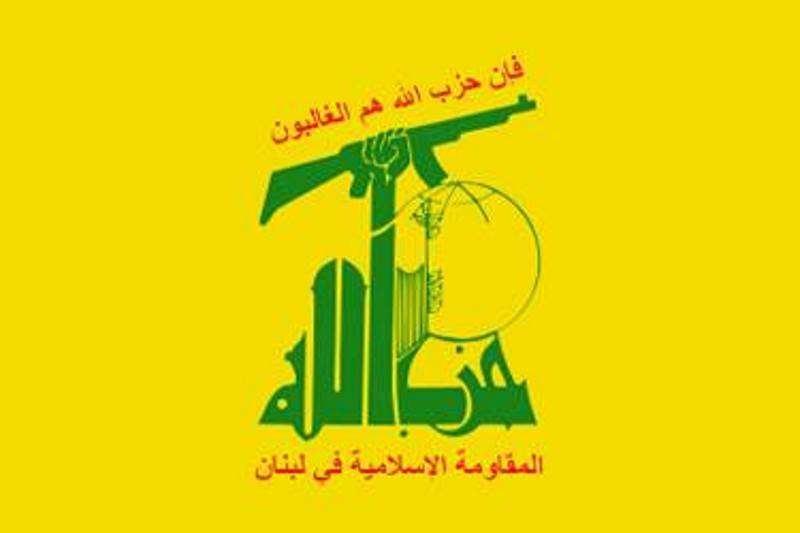
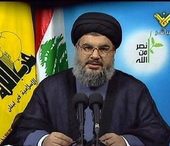
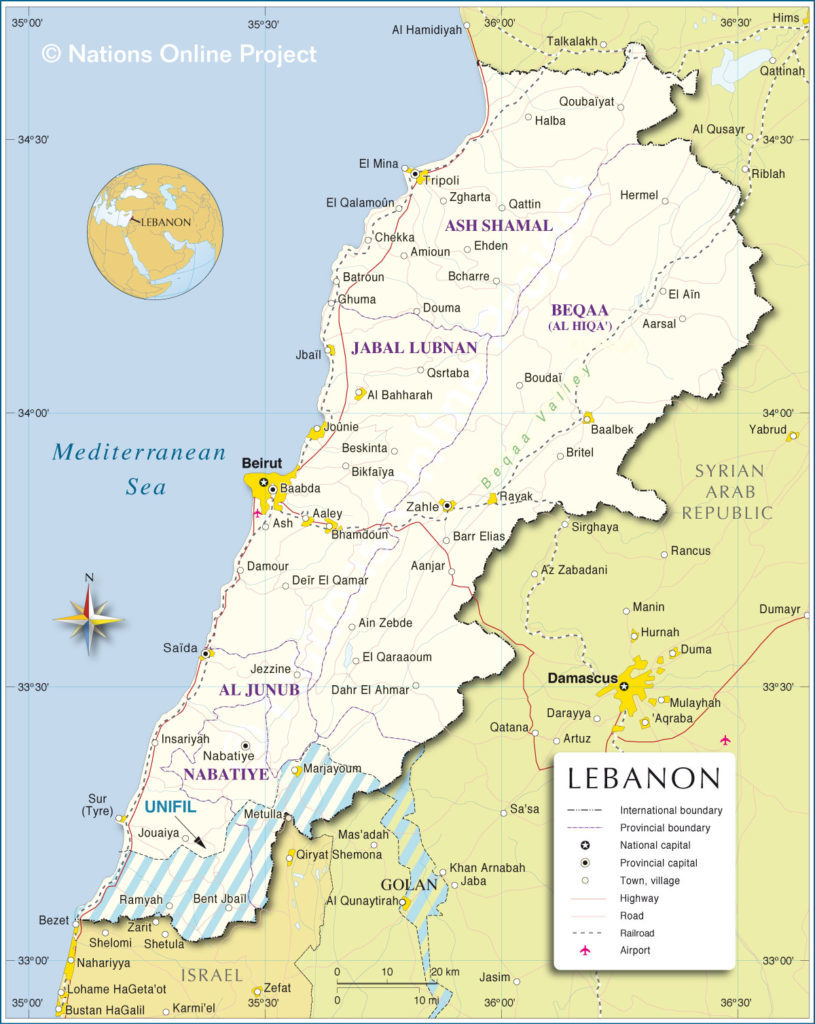
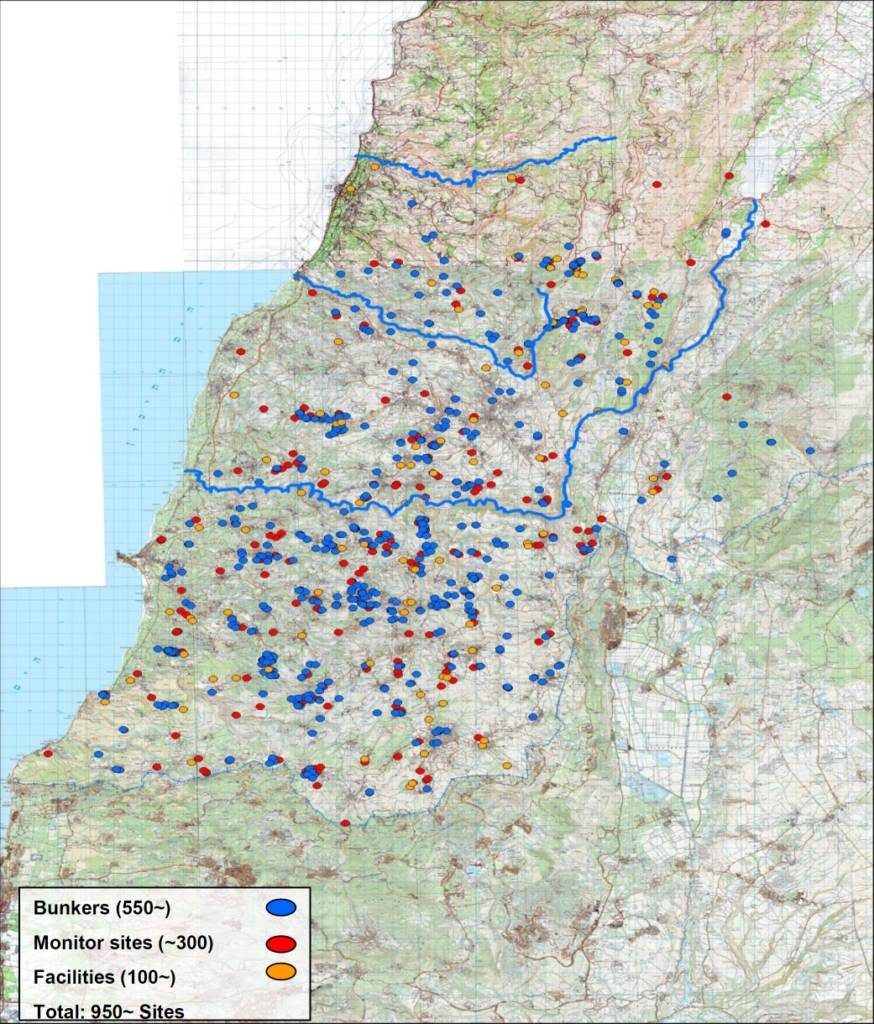
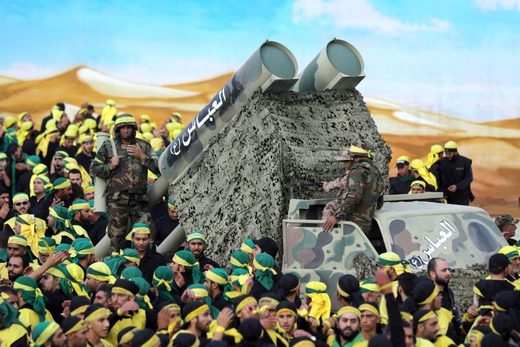
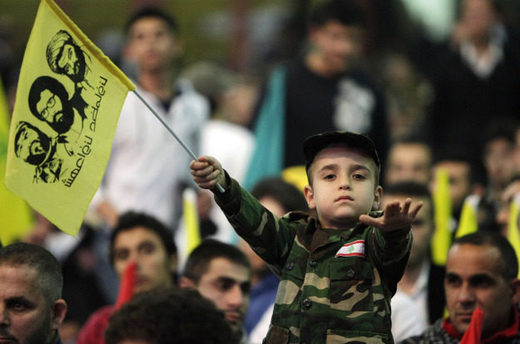
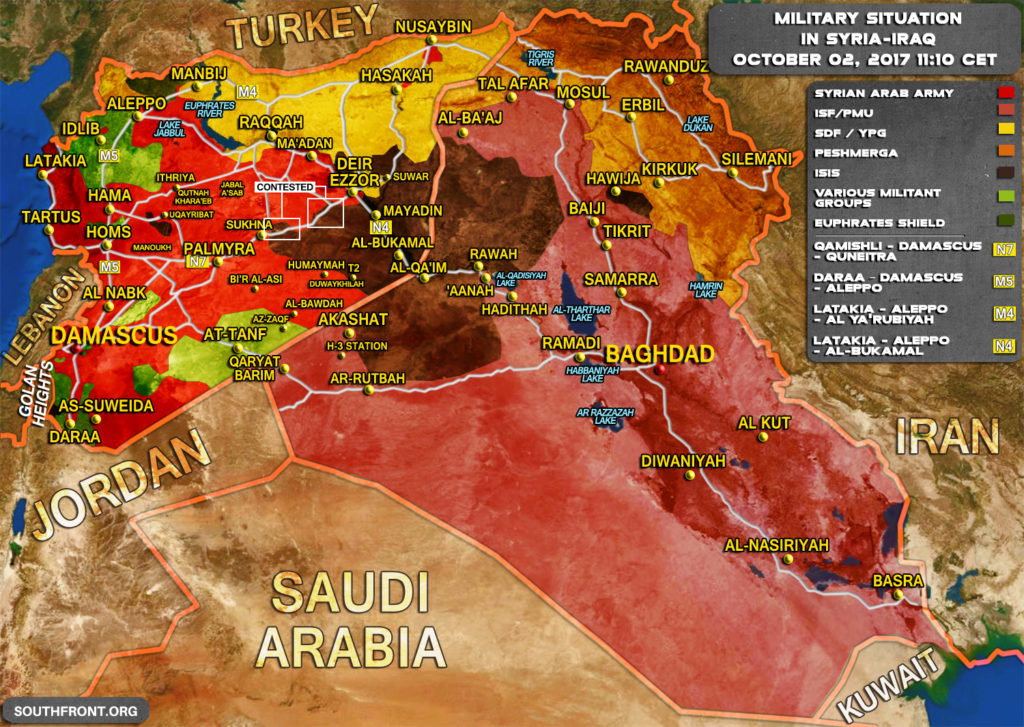

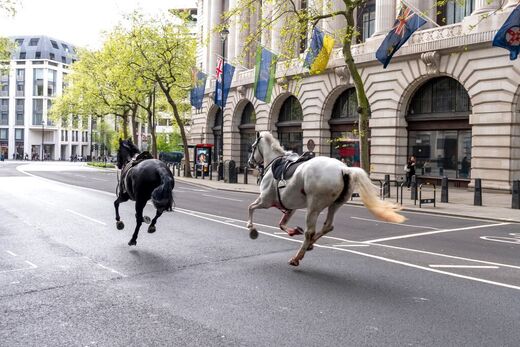

Reader Comments
to our Newsletter